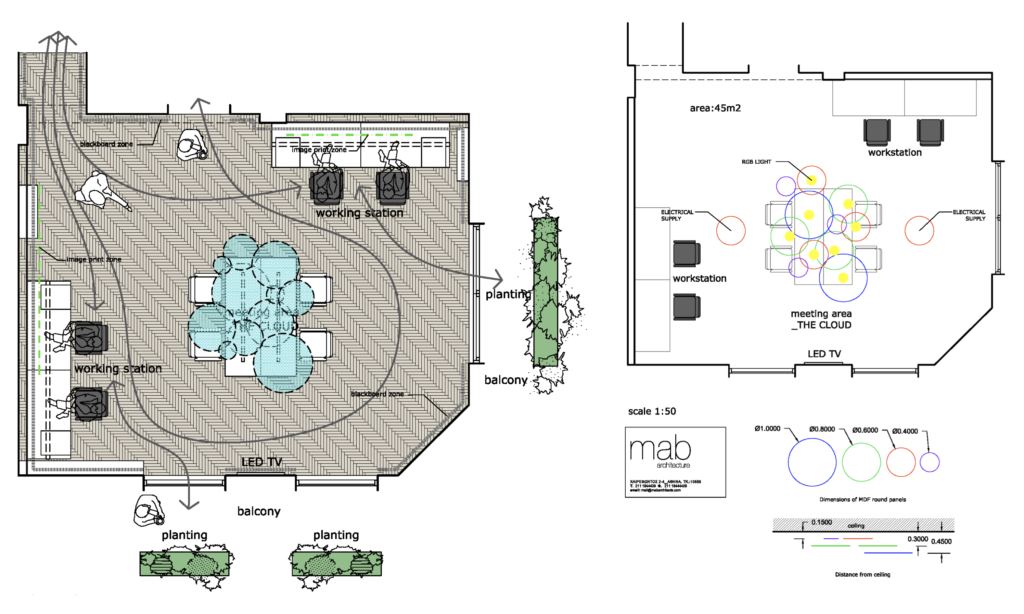Diffusing Digital Information as Light
Commissioned artwork, MIT Athens (GR)
Interactive lighting installation, sentiment analysis, social media scraping
2013
Interactive lighting installation, sentiment analysis, social media scraping
2013

Despite the fact that the Cloud can be used as any other contemporary “smart” lighting device, its extendable and open architecture becomes a significant tool for customized interiors. As the Cloud consists of separate panels with various dimensions positioned at different heights, each can radiate specific information, extracted either from the database on the cloud or “sniffed” in real-time directly from sensor data that are streamed on the local network. This fusion of digital information in the chandelier can assist the emergence of immersive and mesmerizing lighting patterns, as intensities and color shifts can be easily achieved. The lighting system is fully controlled by the user through the use of a physical panel, as well as configured and parameterized by a middleware interface, accessible from a computer or a mobile device. One of the advantages of this development is that many lighting units can also be installed into the space, either in the same area or at separate locations around the house, offering seamless extensibility with minimum software or hardware design. The overall lighting of the house can be split into different zones if needed, and it can be controlled simultaneously from individual channels. By using the same user interface, each lighting zone can be programmed easily (simple drag and drop functions), creating a unique interactive palette of spatio-temporal design.
A dynamic lighting system, such as the Cloud, at one extreme, may mimic the warmth and intimacy of candlelight and on the other provide the lighting levels and even distribution of a sports hall, with every conceivable variant in between. The system adjusts to pre-set ranges that, according to stored settings, offer optimum and accurate performance to accompany a relevant task. If the occupant selects a value for dining, the brightness level of the light is set to 300 lux, and if alternatively a brighter environment is needed, the light adjusts accordingly to meet the appropriate settings. This lighting optimization is likely to enhance a person’s performance on each task, a prerequisite for developing an ambiance that extends preferences and sustains well-being.
By using a custom middleware, specific data readings can connect to any lighting area allowing the user to configure how information is going to be visualized, as well as how the interconnection between each lighting display is going to affect the total result. Thus, any micro, meso, or macro properties that can be sensed by the monitoring systems of the domestic interior can be used to alter parts of the composition. For example, the average mood of the household, which is collected from sensing devices, can be configured to display a particular lighting combination to assist the inhabitants in shaping their personalized interior space.
Diffusing light in space and creating areas of spatialized configurations can have a profound effect on inhabitants that are immersed in this collected datapool. As in the artworks of James Turrell, light can become something more than a source of illumination. It can become a surface with volume, information, and meaning, as well as something that it is vital to perception and psychological and biological needs. The combination of space and time in relation to the light patterns can create mesmerizing and profound experiential effects, defining architecture that is able to integrate itself with human and cultural memory and become reflexive and performative – in real time or retrospectively. In this example lighting design is used as an expressional skin that empowers the architecture to become able to use light and color in order to create supportive and affective interior spaces.